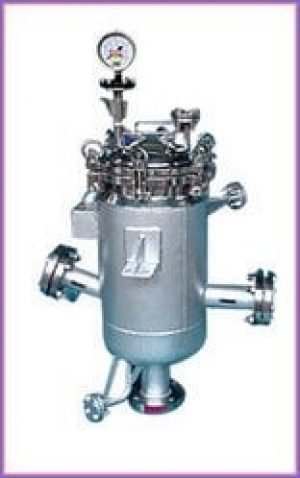Description
Viscosity is a major factor in industrial filtration. With flow rate and filtration rating, they are key elements in the selection of an industrial filter. The more viscous a product is, the more complicated it is to get it through a filter.
A viscous filter is ideal for removing solid particles from highly viscous or pasty materials. Filters such as these not only remove solids, but they also ensure that the feed slurry is mixed uniformly inside the filter, since the filter element keeps rotating during filtration.
It consists of mainly four parts
- Drive assembly – consists of a geared motor mounted on a motor stool. The motor shaft is connected to the shaft extending from the filter element by a rigid coupling
- Intermediate assembly – It has input and outlet nozzles on the same axis and is flanged on both sides. The filtered and unfiltered paste are separated by the inner pipe, to which the outlet nozzle is welded. The inner pipe supports the scraper assembly, which includes a blade holder and nylon blades.
- Filter element – It is made of welded wedge wire and is constructed in a self-supporting way. It’s essentially a filter element that doesn’t clog and has a smooth filtering surface. The filter element is supported by the intermediate assembly’s inner pipe.
- Filter housing- Stainless steel is used in most cases, and a jacket can be added. The bottom of the housing will have a drain valve, and the top will have a flanged end for bolting to the intermediate assembly.



